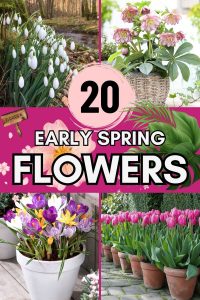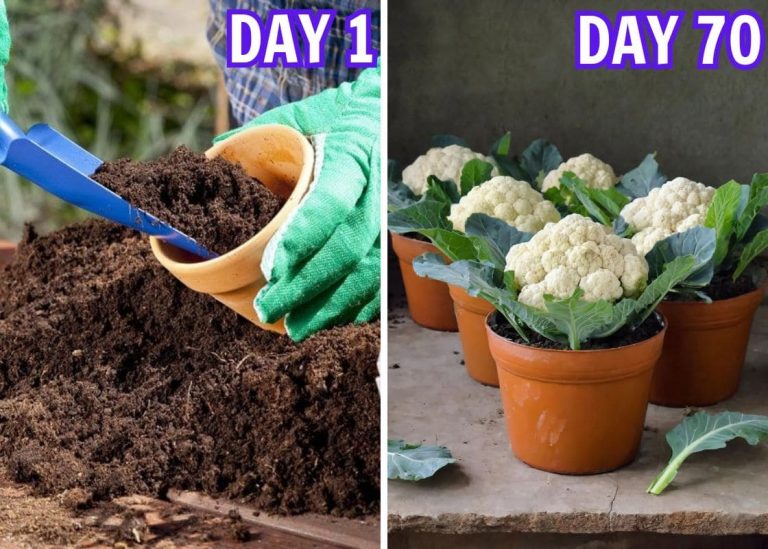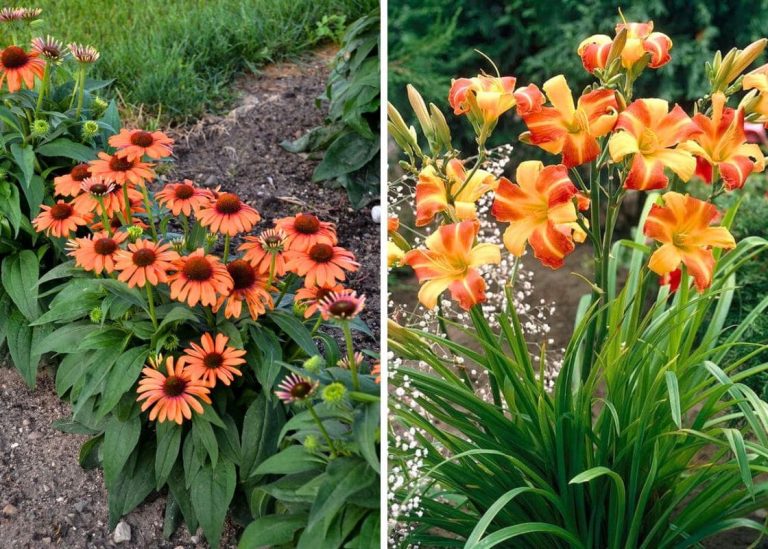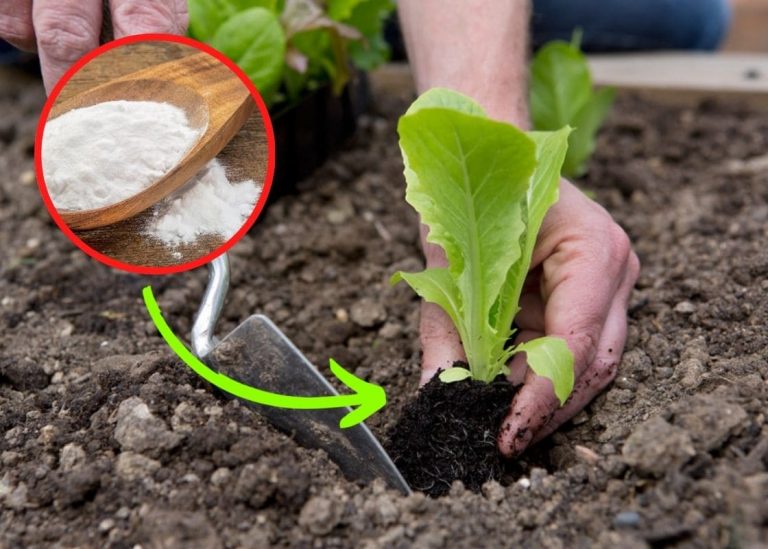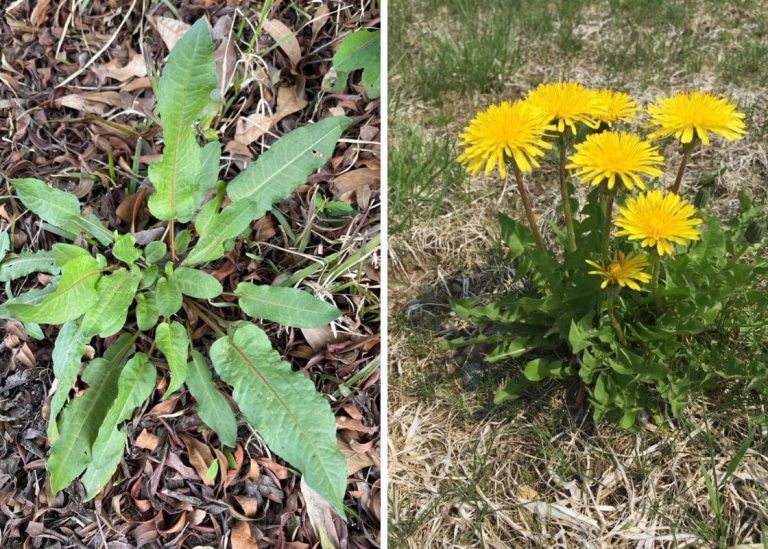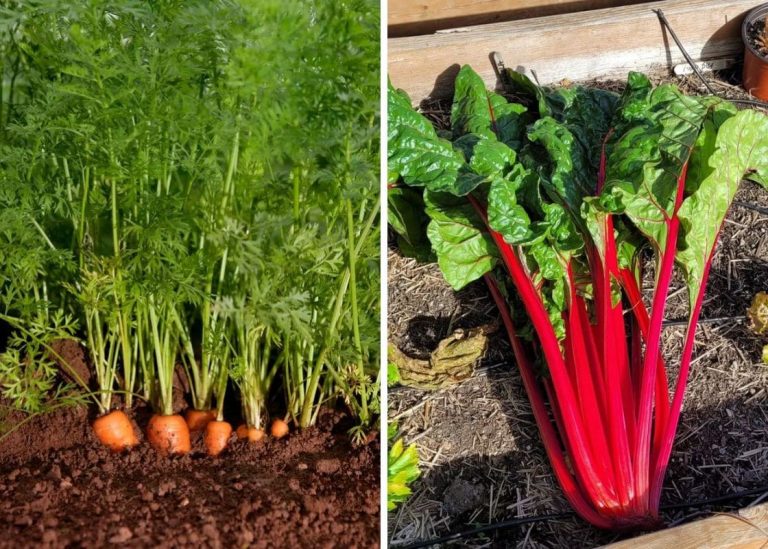22 Stunning Early Spring Flowers to Welcome the Season
One chilly morning in late winter, while stepping out to check the compost bin, I spotted a cluster of tiny white blooms nestled near the base of a bare shrub. Snowdrops—quiet, brave, and glowing against the frost. I hadn’t planned to find beauty that early in the year, but there they were, reminding me that the cold would pass, and life would bloom again.
That’s the thing about early spring flowers—they don’t wait for the perfect moment. They rise through frozen ground and leftover leaves, opening up to the still-chilly air like they’ve got nothing to prove.
I’ve grown quite a few spring bloomers in my garden, and I’ve admired many more in neighbors’ yards and wild pockets of woods. They bring light, texture, and a little bit of magic to those first warming days. And they’ve taught me that sometimes the softest flowers are the strongest of all.
#1. Snowdrop
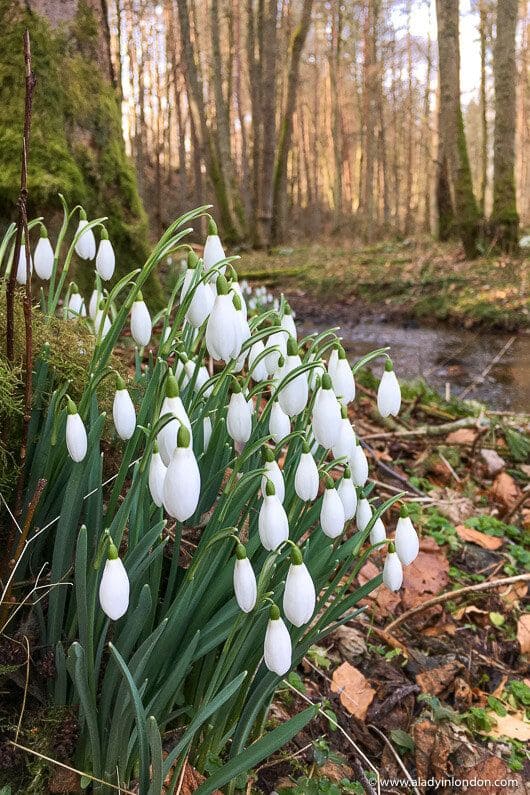
Snowdrops are like whispers in the garden—quiet, graceful, and the very first to arrive. I spotted mine blooming one late February morning, right through a patch of melting snow near the old cherry tree. Their nodding white blooms and slender green stems felt like a secret the garden was sharing only with me.
They grow best in moist, well-drained soil and dappled shade. I tuck them beneath deciduous trees where winter light filters through and the soil stays cool. After flowering, I leave the foliage to die back naturally—it’s not glamorous, but it feeds the bulb for next year’s bloom.
#2. Crocus

Crocuses feel like confetti tossed by nature. Their petals open wide under the morning sun, splashing purples, yellows, and soft whites across the lawn and borders. I planted mine in small clumps near the mailbox, and now they greet me like old friends on my early spring walks.
These little bulbs love full sun and well-drained soil. I plant them shallow—just a few inches down—and they multiply easily. Letting them naturalize creates beautiful, carefree drifts that return brighter with each passing year.
#3. Daffodil
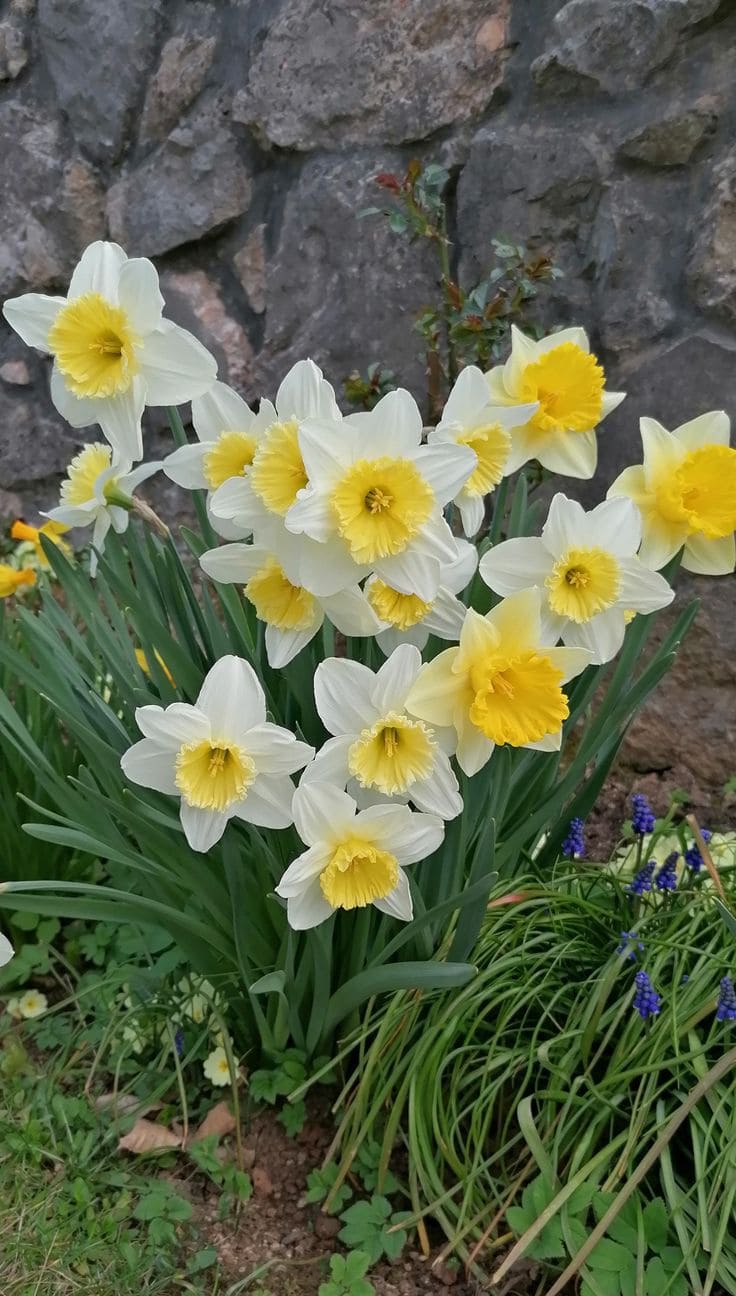
Daffodils always make me smile. Their golden trumpets rise boldly after weeks of gray skies, catching every bit of light and bouncing it right back. My favorite variety, a pale cream with an apricot center, was gifted to me in a brown paper bag by a neighbor who said, “Trust me, they’ll glow.”
They thrive in full sun or light shade and don’t fuss much about soil, as long as it drains well. I plant the bulbs in fall, about six inches deep, and leave the leaves after blooming to do their work underground. Every spring, they show up brighter, more generous, like they never left at all.
#4. Tulip

Tulips are bold without needing to shout. I plant them in quiet pockets—along stone edges, beside the mailbox—and every spring, they stand tall with blooms like painted cups. One year, I mixed orange tulips with soft lavender ones and didn’t expect much… but they bloomed together like a sunset and a storm.
They love full sun and soil that drains well, especially through the winter. I plant them deep, about six inches down, and space them close so they bloom in rich, full waves. After flowering, I snip the heads and leave the leaves to fade slowly, feeding next year’s show.
#5. Hellebore
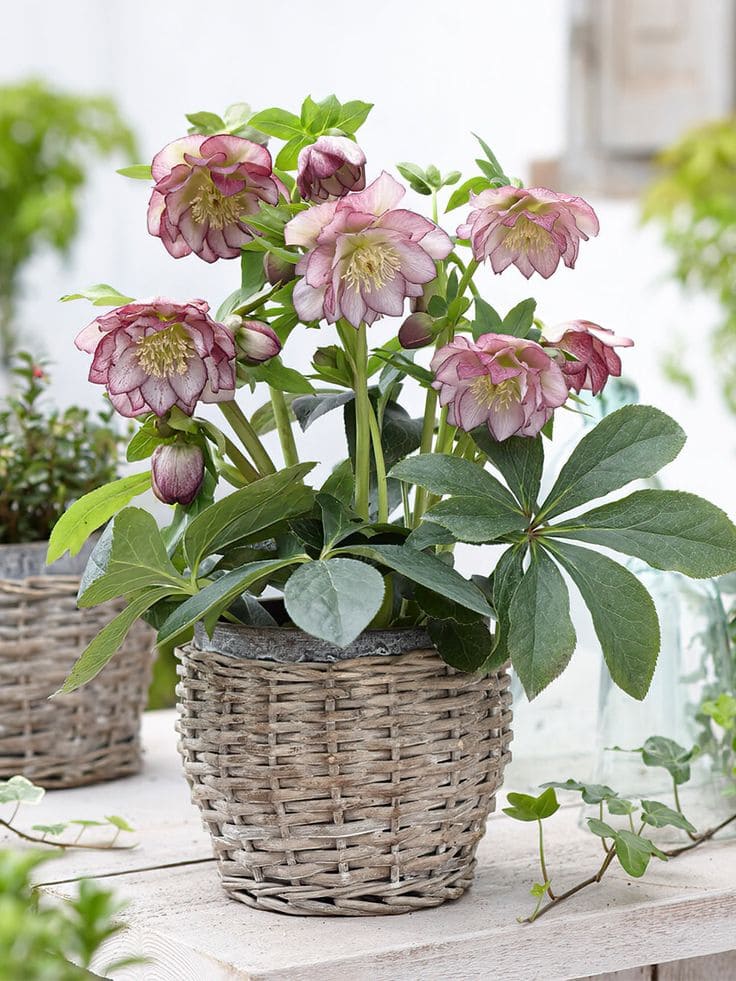
Hellebores are garden poetry in early spring—elegant, quiet, and beautifully unexpected. I first saw them blooming through leaf litter in a friend’s woodland path, their nodding blossoms in shades of rose and plum. Now I grow them under our apple tree, where their dusky flowers bloom before anything else dares.
They prefer shade and rich, damp soil with good drainage. I prune away last year’s leaves in late winter to let the new blooms shine, and by spring’s end, their seedlings scatter like confetti, ready to settle into their own shaded corners.
#6. Hyacinth
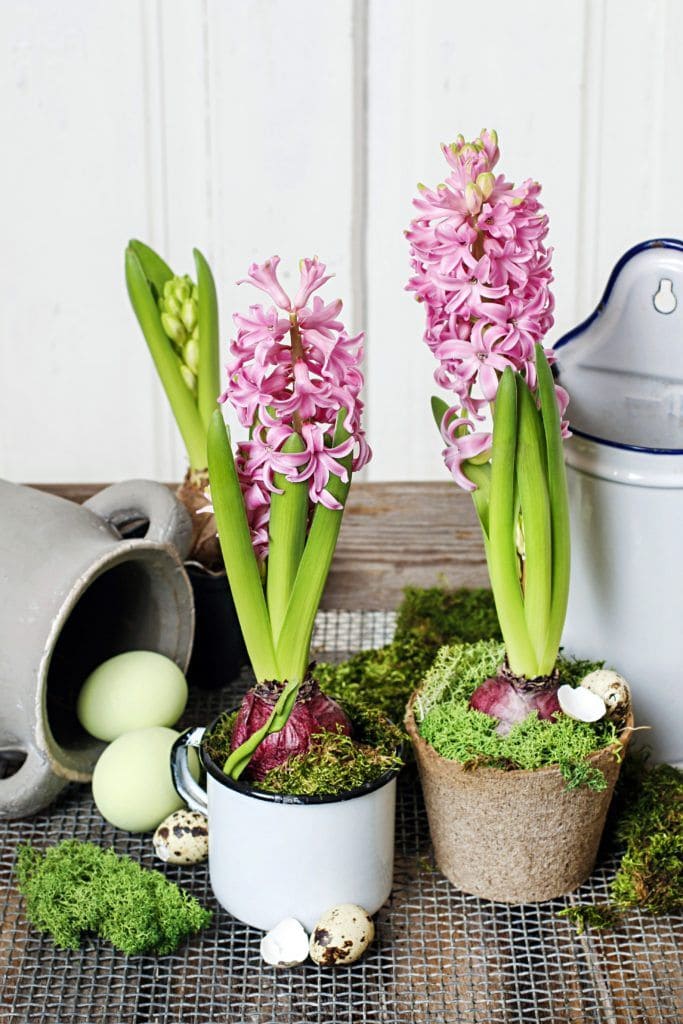
Hyacinths bloom like they’ve bottled spring’s entire fragrance and spilled it into the garden. I plant them near our back steps just so I catch their scent each time I walk outside. Their tight flower spikes—blues, pinks, creamy whites—stand like small towers of color in early beds.
They like full to partial sun and soil that doesn’t stay wet for long. I plant their bulbs in autumn and feed them lightly when new shoots appear. After blooming, I let the leaves linger and lift them only when they’ve fully faded into rest.
#7. Primrose
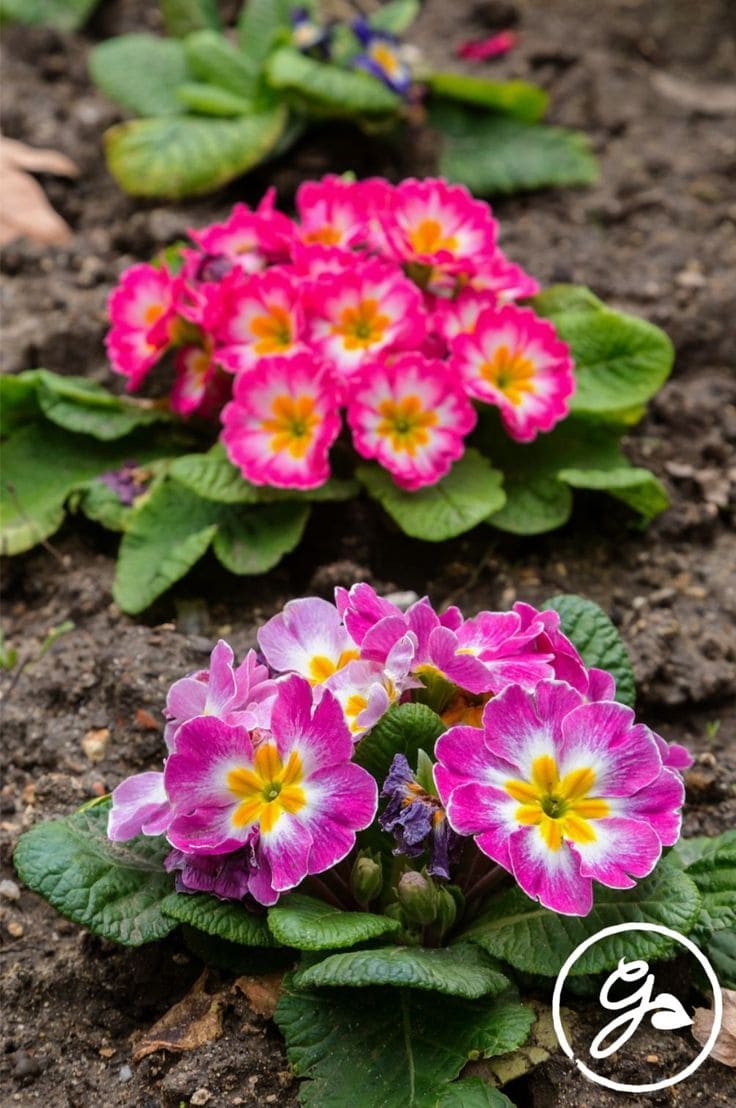
Primroses are like little bursts of happiness after a long winter. Their soft petals in yellows, purples, and blush pinks peek out like shy guests, but they settle in fast and brighten every edge they touch. I keep mine in the shadiest part of the garden where their color glows against the damp soil and mossy stone.
They thrive in cool, moist soil with dappled light, especially early in the season. I water them consistently, especially during dry stretches, and deadhead blooms to keep the show going. In early spring, they feel like a gentle promise that more beauty is coming.
#8. Pansy
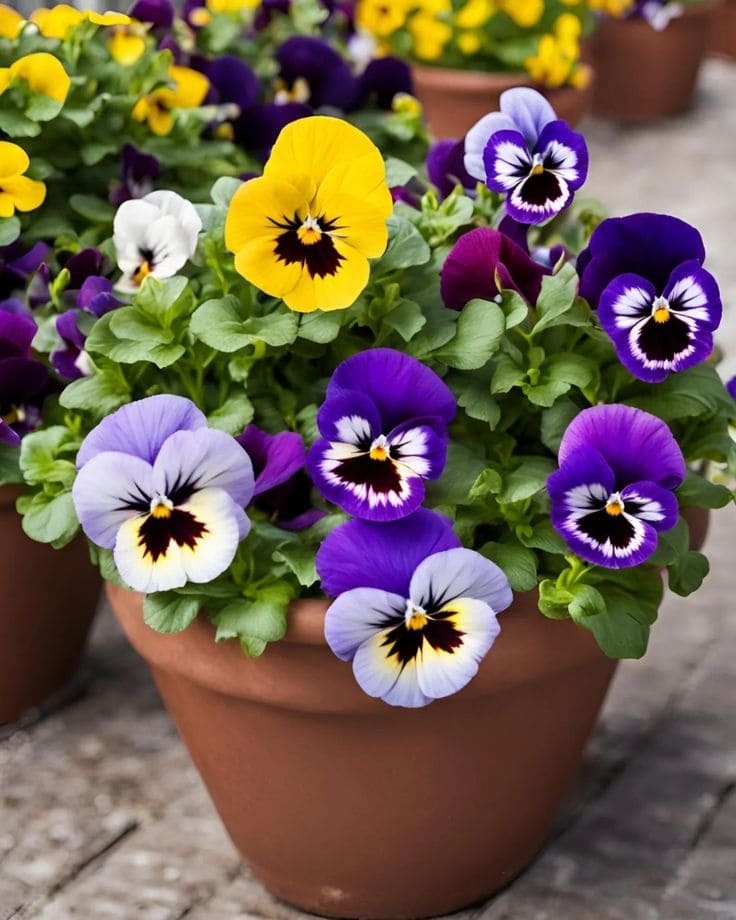
Pansies look like they’re smiling. Their velvety petals come in so many colors—violet, deep red, lemon yellow—and often with little “faces” at the center. I tuck them into pots by the door and along garden paths, and they always greet me like cheerful companions.
They prefer cool weather and loose, rich soil. I water just enough to keep them moist but not soggy and pinch away spent blooms often. They’re easy, sweet, and the kind of flower that always makes a space feel cared for.
#9. Forsythia

Forsythia is pure celebration—bright yellow blooms bursting out before a single leaf appears. The first time ours bloomed, I remember my son running up to it shouting, “It’s awake!”—and he was right. It lit up the corner of the yard like spring had flipped a switch.
It loves full sun and isn’t picky about soil, as long as it drains well. I prune it right after flowering to shape the shrub and encourage next year’s growth. Left to its own rhythm, it becomes a golden fountain when the garden needs it most.
#10. Grape Hyacinth

Grape hyacinths look like little beads of color stitched into the ground. I planted a handful along the garden path one chilly fall day, and by spring, they had multiplied into cheerful clusters of deep blue. They’re small but bold, and when the light catches them, it feels like tiny lanterns have been lit across the beds.
They thrive in full sun to light shade and appreciate soil that drains easily. Once they settle in, they spread happily without much fuss, popping up in thicker carpets each spring if left undisturbed.
#11. Siberian Squill

Siberian squill feels like a secret only gardeners know. Its nodding blue flowers appear just as the frost disappears, filling shady spots with soft pools of color. I once planted a handful under a young oak, and now every spring it looks like the sky has spilled across the ground.
They do well in sun or shade and need very little attention once planted in well-drained soil. Watering only during especially dry spells keeps them content, and they naturalize beautifully over time into thick, dreamy drifts.
#12. Bleeding Heart
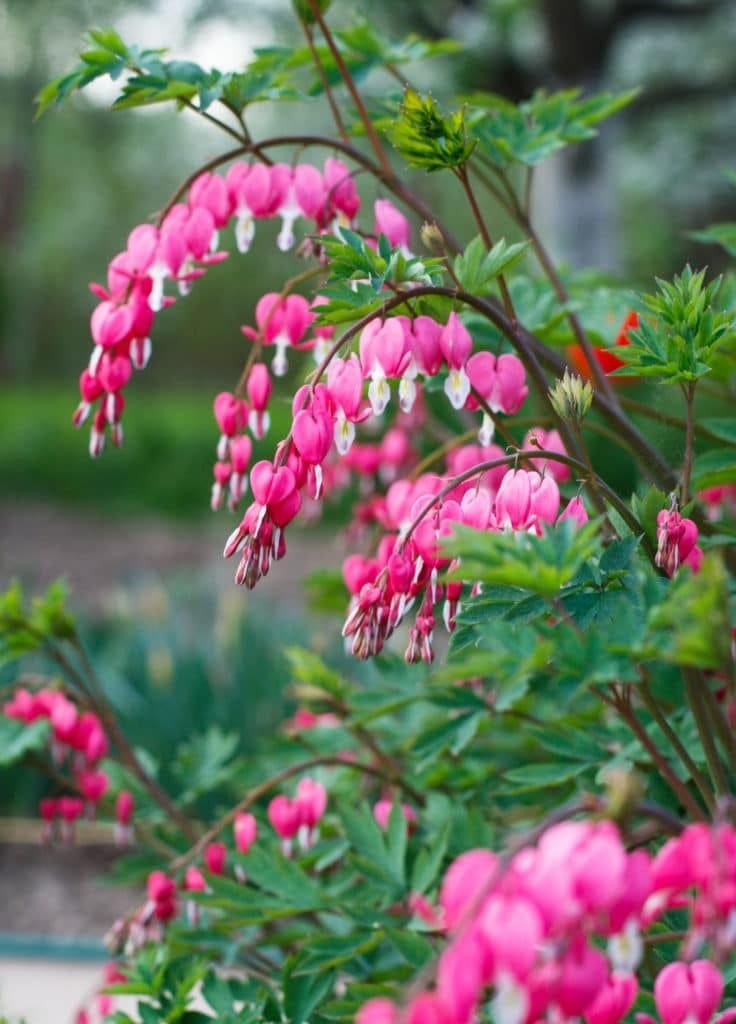
Bleeding hearts always seem like a storybook plant—delicate, romantic, almost too magical to be real. Their arching stems with pink heart-shaped blooms were one of the first plants I begged to have in my childhood garden, and seeing them every spring still feels like greeting an old friend.
They prefer partial shade and rich, consistently moist soil. I keep mine tucked into a cool corner, where they thrive quietly until the heat of summer nudges them to sleep beneath the earth until next year.
#13. Virginia Bluebells

Virginia bluebells feel like a gentle sigh across the garden when they bloom. I planted a few tucked into a shaded nook by the fence, and by early spring, their pink buds unfurled into clusters of sky-blue bells, swaying with every soft breeze. Seeing them makes even the quietest parts of the garden feel alive.
They love rich, moist soil and dappled sunlight, spreading slowly each year. I let them take their time, trusting they’ll quietly weave themselves deeper into the garden’s story with every passing spring.
#14. Windflower
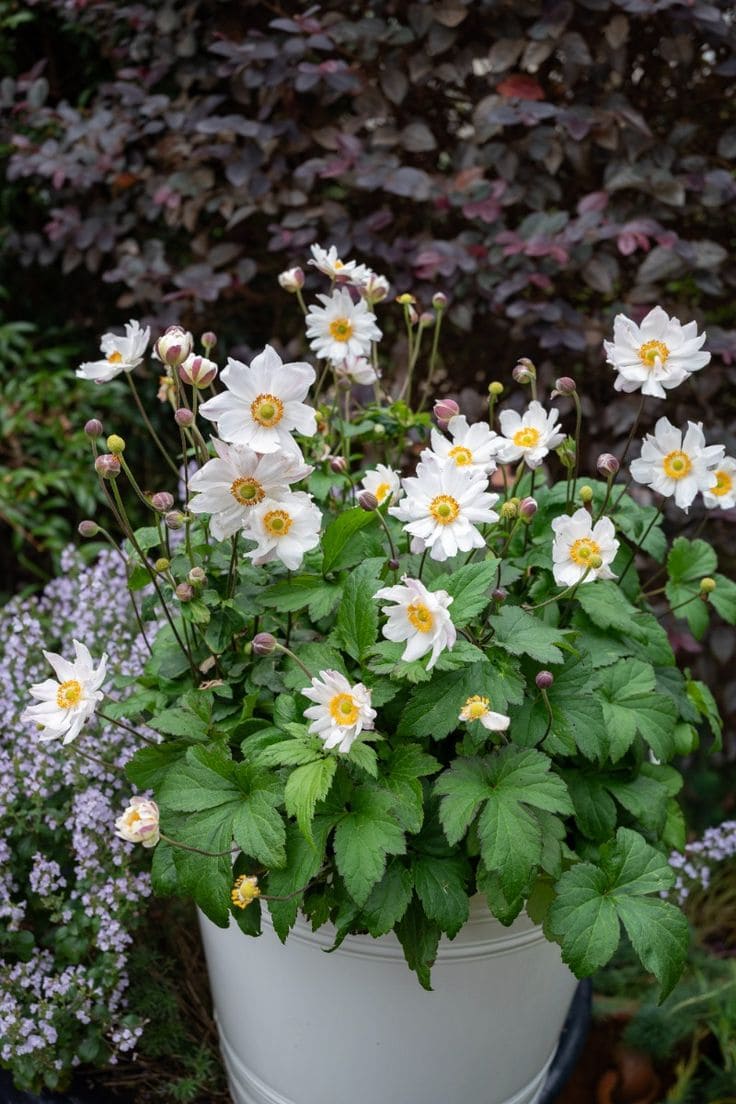
Windflowers flutter like wild confetti on a breezy day. Their daisy-like blossoms in soft blues and pinks seem almost weightless as they dance across early beds. I first planted a few under the dogwood tree, and now they carpet the ground each March, whispering the season awake.
They thrive in full sun to partial shade with well-draining soil. Once they find their place, they return faithfully, asking for little but giving so much with their gentle, playful presence.
#15. Dutchmans Breeches
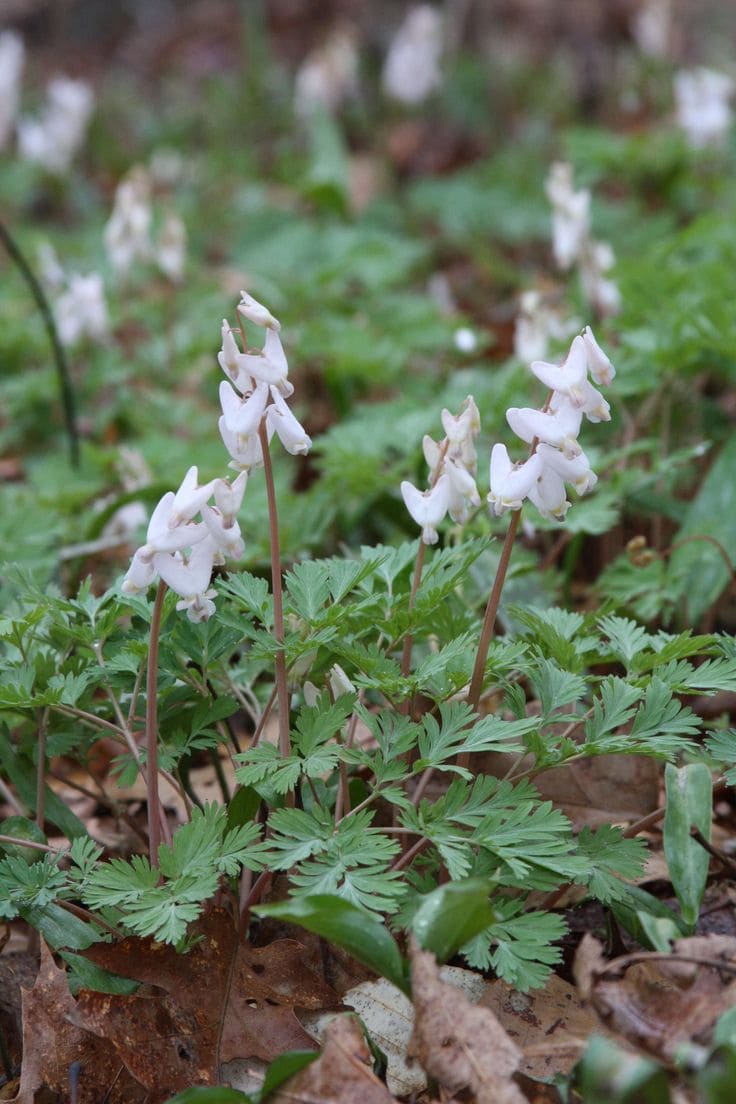
Dutchman’s breeches always make visitors stop and smile. Their white, upside-down, pantaloon-shaped flowers dangle from delicate stems over soft green foliage, looking like tiny laundry lines in the woods. I spotted my first patch during a spring hike and knew I had to find a spot for them at home.
They favor moist, rich soil and shady woodland corners. After blooming, they fade quietly into dormancy, content to wait out the heat and return each cool spring like a soft, familiar surprise.
#16. Pasque Flower
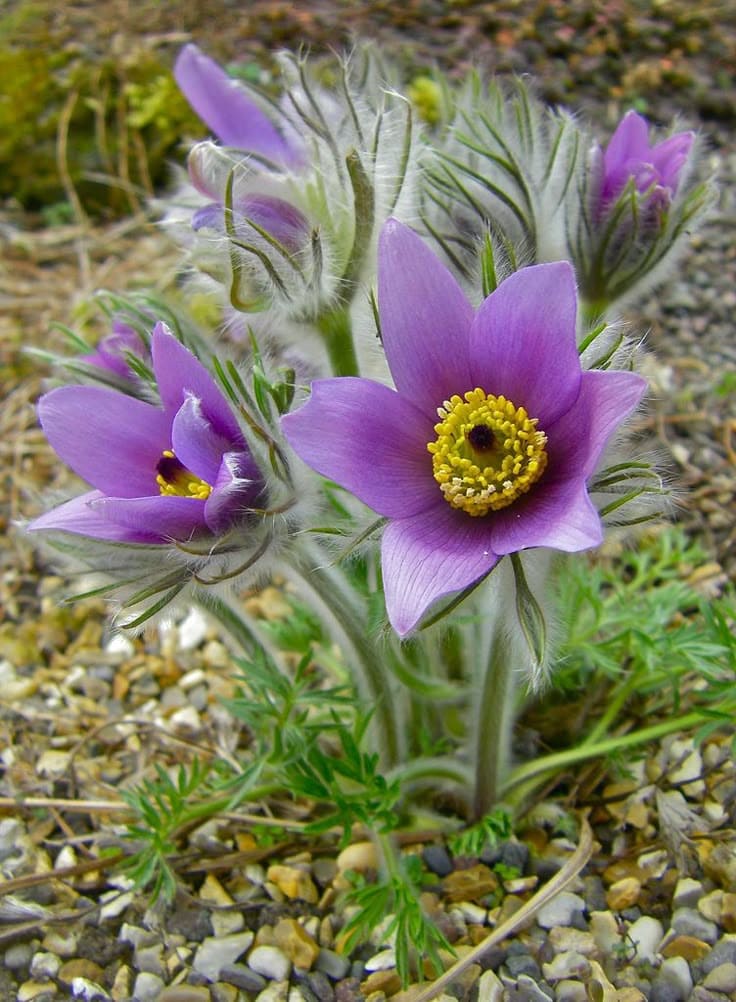
Pasque flowers feel like a secret tucked into early spring. Their soft, fuzzy stems and silky purple blooms seem almost too delicate for the chilly mornings they brave. I planted a few near the stone path one autumn, and now they rise every March like little sentinels, their golden centers catching the light.
They thrive in full sun and well-drained soil, preferring a quiet, undisturbed spot. I leave them alone once they’re planted, and in return, they offer those fleeting, magical blooms just as winter finally loosens its hold.
#17. Witch Hazel

Witch hazel casts a kind of quiet spell over the late winter garden. I still remember stepping out on a raw, gray afternoon and catching the scent—sweet and spicy—long before I spotted the spidery yellow blooms dancing across bare branches. It felt like a secret promise whispered just to me.
They prefer full sun to partial shade and moist but well-drained soil. I prune them lightly after flowering to shape their graceful form, always grateful for the way they dare to bloom when the world is still half-asleep.
#18. Claytonia virginica
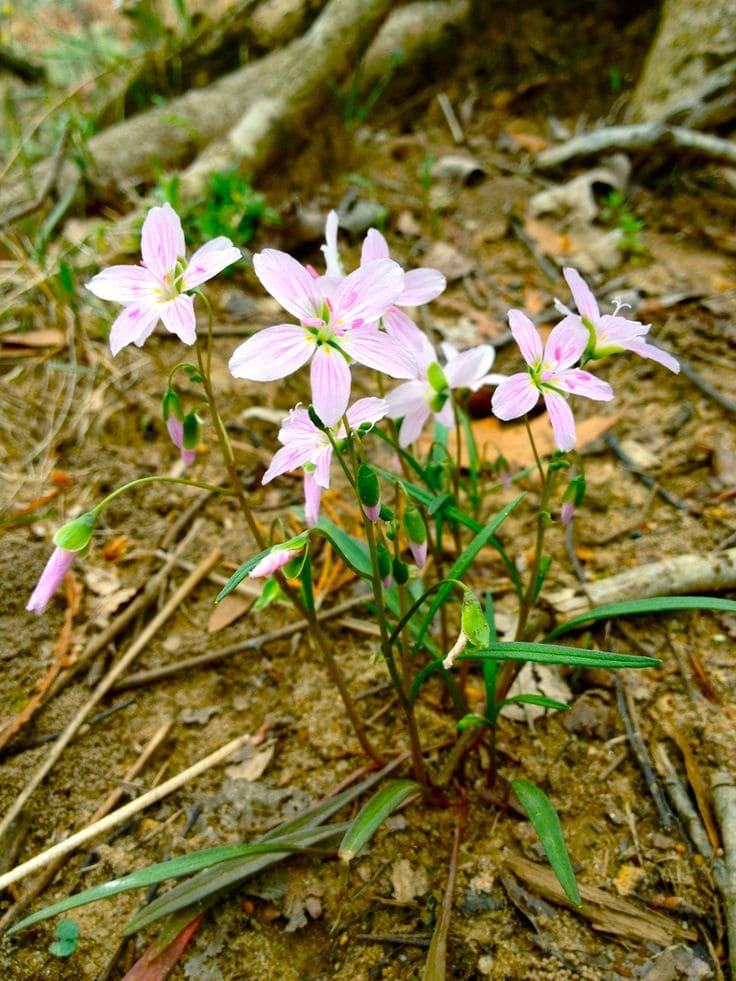
Claytonia, or spring beauty, lives up to its name in the most tender way. Their small, pale pink blooms with fine purple veins carpet the forest floor like a soft sigh. I planted a few bulbs under the oaks, and now every spring they come back, delicate and determined.
They thrive in moist, rich soil and light shade, needing little once they settle in. Their brief blooming window feels like a gift, a soft and fleeting celebration of the season’s earliest days.
#19. Glory-of-the-Snow

Glory-of-the-snow shows up right when you think winter might never let go. Its star-shaped blooms—sky blue, soft pink, and white—pop through frosty soil like they’ve been waiting for the light. I planted a few near our rock garden years ago, and now they bloom in gentle clusters, brightening the still-sleepy landscape.
They prefer full sun to light shade and well-drained soil. I never fuss with them—just let them settle, multiply, and reappear each spring like tiny bursts of resilience.
#20. Leopards Bane

Leopard’s bane is sunshine with roots. Its cheerful, yellow, daisy-like flowers appear early and bold, lighting up the edge of my perennial bed before most things wake up. My kids always call them “happy flowers,” and they’re not wrong—nothing lifts a morning quite like their bright faces catching sunlight.
They grow well in part sun and moist, rich soil that drains easily. I water them during dry spells and cut back faded blooms to keep them looking fresh all season.
#21. Siberian Iris

Siberian iris brings elegance into the mix. Slender green leaves grow like graceful blades, and then—seemingly out of nowhere—those violet-blue blooms rise tall and stately. I planted a few near the pond’s edge, where their reflection makes the whole garden feel poetic.
They thrive in moist, slightly acidic soil and appreciate full sun with some afternoon shade. Once established, they ask for little but give so much beauty in return, year after year.
#22. Japanese Quince
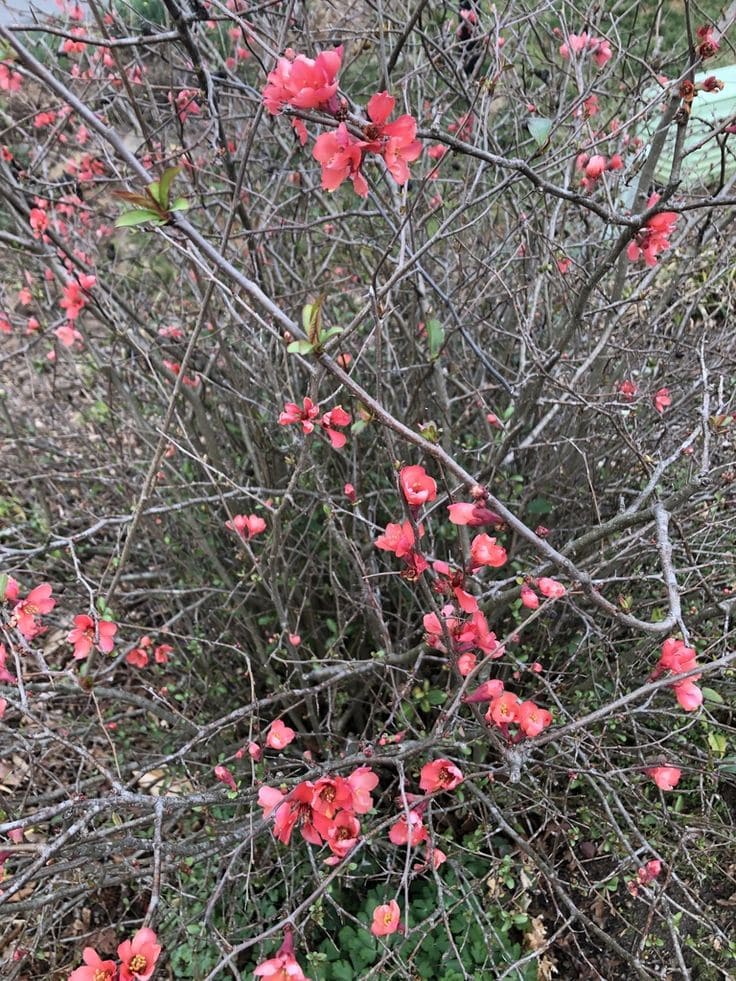
Japanese quince explodes into coral, pink, and fiery red blossoms before it even thinks about leaves. I tucked mine into a sunny spot by the front gate, and by March, it looks like the entire shrub is on fire with color. It stops neighbors in their tracks, and honestly, it stops me too every time I step outside.
It thrives in full sun and well-draining soil, needing just an occasional trim after flowering to keep its shape. Hardy and generous, it feels like a final, joyful exclamation point on the garden’s slow awakening.
Final Thoughts
Early spring flowers don’t just mark the changing of the seasons—they remind us that beauty often begins quietly, even when the world still feels cold and gray. Every bud pushing through frozen ground feels like a small act of hope, a reminder that life stirs even when we can’t yet see it.
And somehow, every spring feels new again—because the flowers never just return; they surprise, delight, and heal, each time, in their own quiet, brilliant way.
